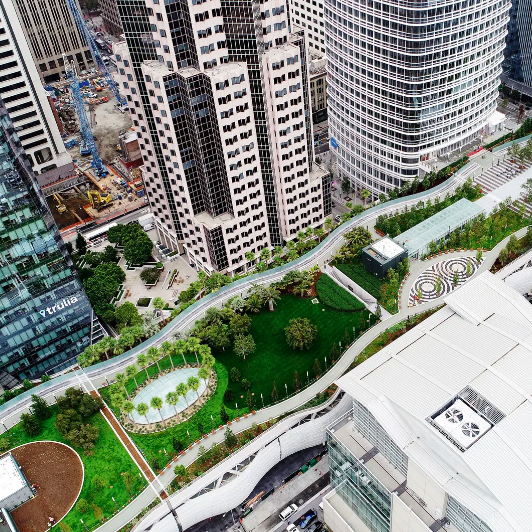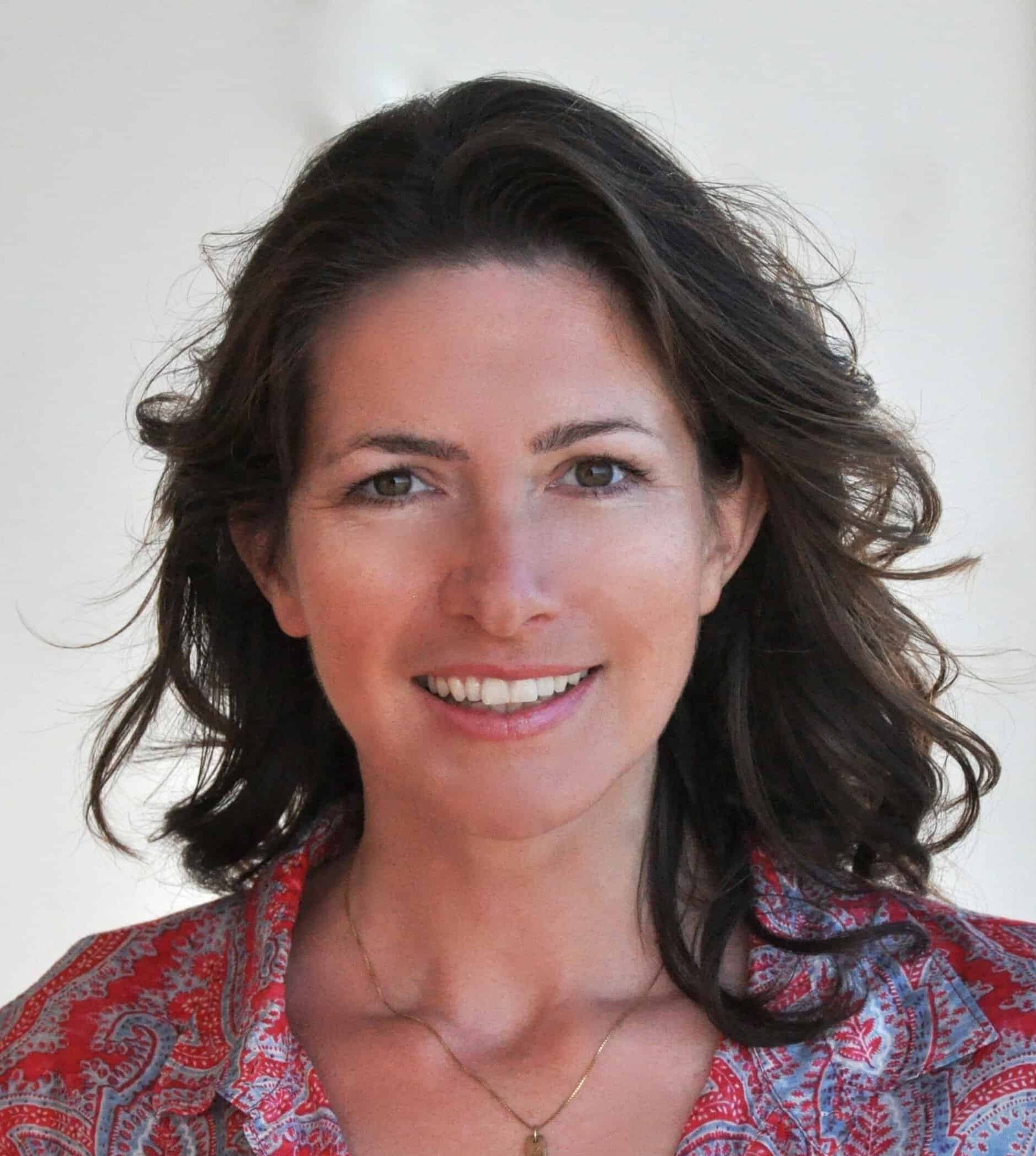The merganser ducks and egrets at the Whalen Lake bird sanctuary near Oceanside, California, don’t know it, but they’re trendsetters, swimming in water that has been purified by state-of-the-art technology.
Pure Water Oceanside, the sprawling water reclamation facility next to the lake, still looks brand new with its Santorini-white buildings and indigo-blue arches under cloudless skies. Up to five million gallons of the city’s wastewater are pumped every day through thick pipes, filters and chlorine tanks in the warehouse-size buildings flanked by blooming purple jacaranda trees. There is no detectable smell in the ultra-clean facility; mechanical engineer Lindsay Leahy, the energetic young water utilities director, calls it “the best-smelling wastewater plant I’ve ever been to.”
It’s also the most modern. Palm-dotted Oceanside invested $70 million in the drink of the future: purified wastewater. It is turning water from the residents’ dishwashers, showers and toilets into potable water — or, to call a spade a spade, toilet to tap.
The pivot to reusing wastewater is badly needed: Potable water is an increasingly precious resource. Worldwide, already 26 percent of the global population or two billion people live in water-stressed areas, according to UN Water, which projects this figure could double by 2050.
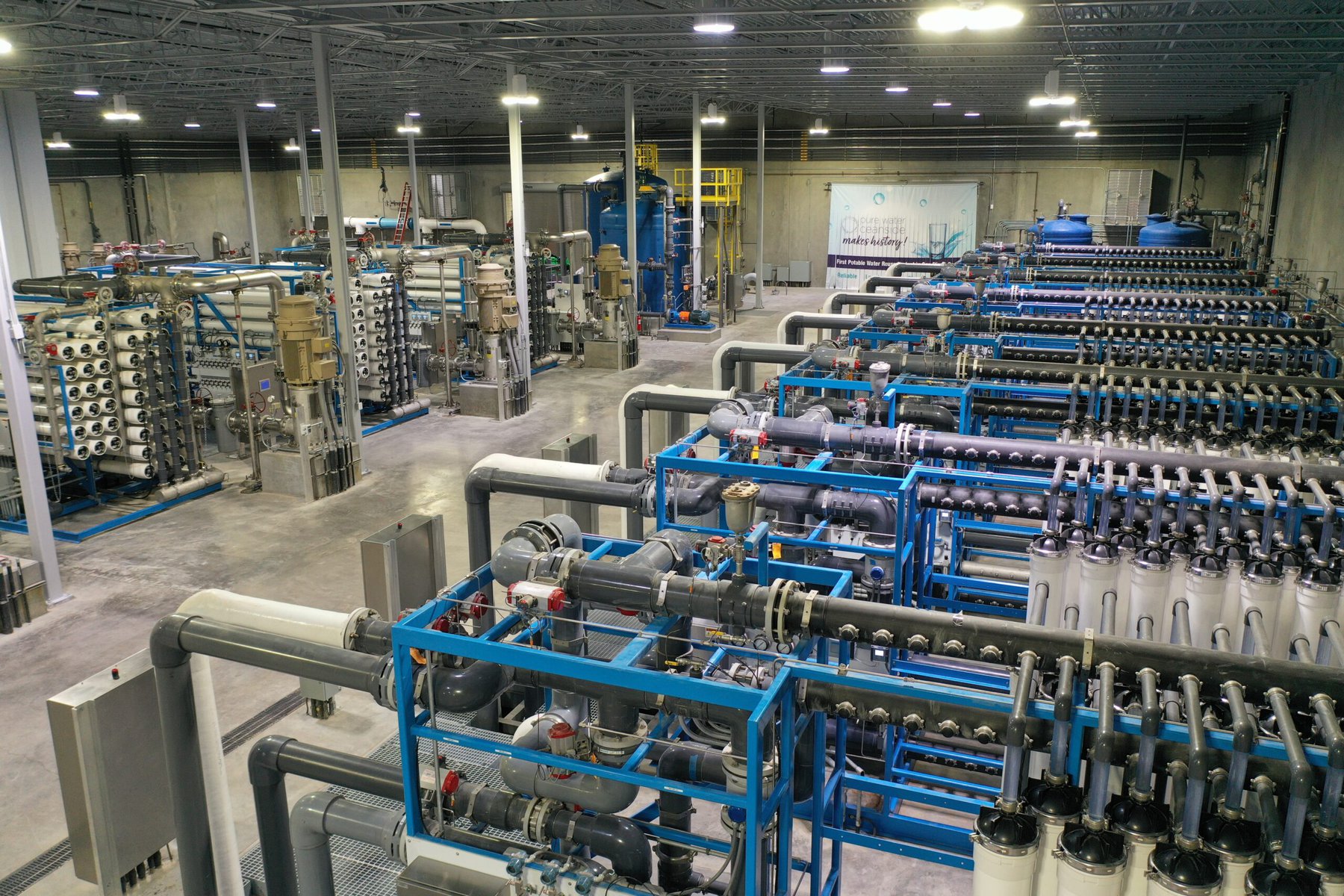
In California, water distribution fights, years-long droughts and climate change have exacerbated the shortage. Before the reclamation facility was built, Oceanside, a city of 175,000 people, imported 90 percent of its drinking water from the highly contested Colorado River and the Bay Delta. “That’s costly, not energy-efficient, and it makes us dependent,” Leahy explains. Pumping, transporting, treating and heating California’s water has an outsize CO2 footprint; it currently uses up nearly 20 percent of the state’s energy, according to the American Journal of Public Health. It’s also ecological nonsense: Perfectly good drinking water is transported over hundreds or thousands of miles, only to be flushed down toilets and kitchen drains.
After an extensive analysis, the city concluded that the reclamation facility was not only the most cost-efficient but also the most ecological solution. “It was cheaper and made more sense than desalination,” Leahy sums up the research. The reclamation process is completely automated. “It takes the human error out of it,” Leahy says. The water gets constantly tested for contaminants and impurities. If the system detects any flaws, it automatically sounds the alarm and diverts the water.
Crushed by negative news?
Sign up for the Reasons to be Cheerful newsletter.Before Pure Water Oceanside opened last year, only 10 percent of the city’s water was supplied by its local underground Mission Basin Aquifer, which has been depleted through overuse and drought. Now, the reclamation facility provides 20 percent of potable water, or three to five million gallons per day, and will eventually purify up to 30 percent of the water needed.
Oceanside made history as the first wastewater facility with advanced oxidization technology, but 200 cities, including nearby San Diego, are building similar facilities. Only 60 miles to the north in Fountain Valley, Orange County, the world’s largest wastewater recycling facility for indirect potable use, the Groundwater Replenishment System (GWRS) just went into use this April, after a $500 million expansion. It cleans 130 million gallons of black water (the technical name for wastewater from toilets) and provides up to 130 million gallons of high-quality drinking water for up to one million residents daily. If you’ve been to Disneyland recently, you’ve already drunk purified wastewater.
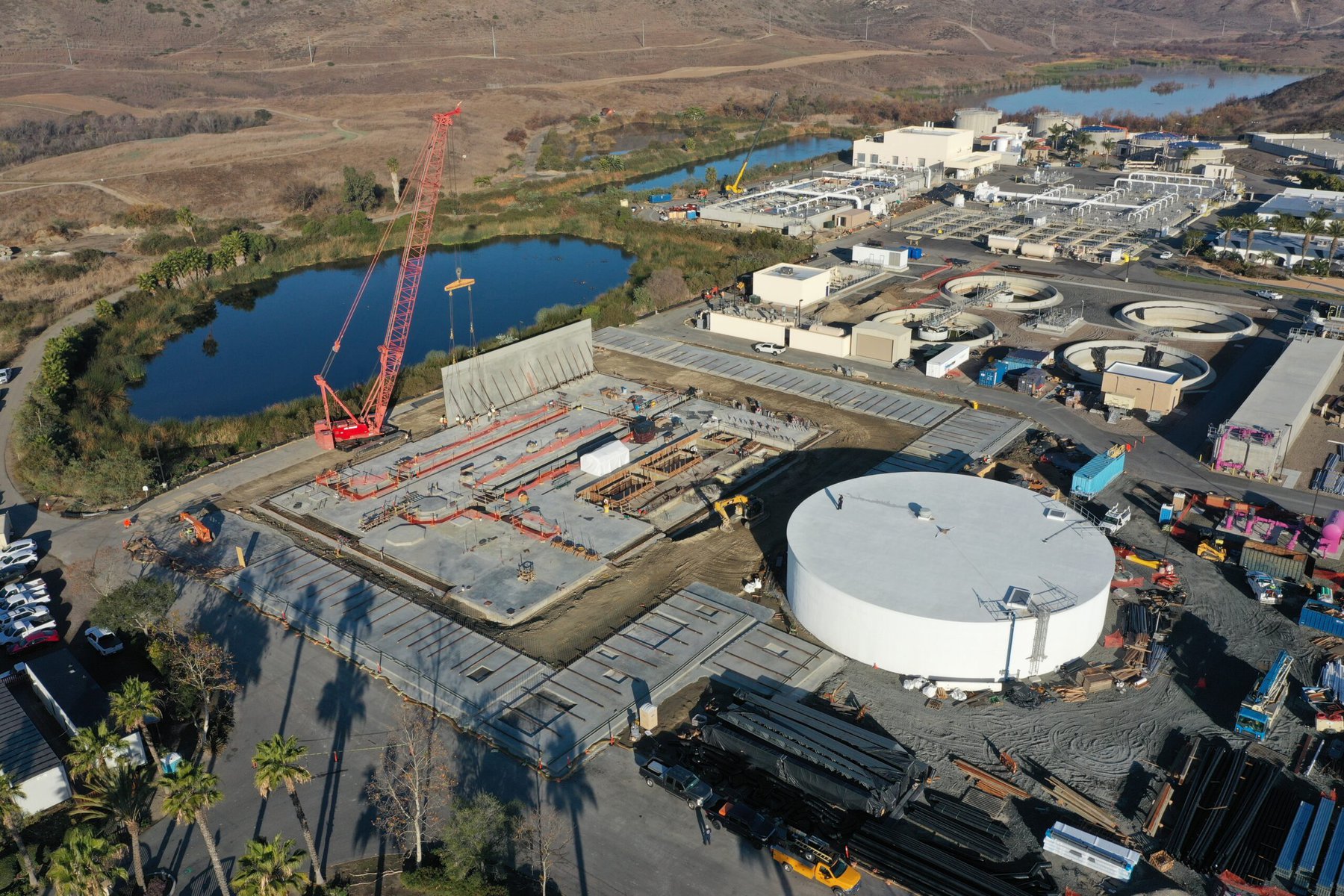
In 2015, San Francisco was the first city to pioneer the requirement that all new commercial buildings larger than 100,000 square feet recycle their wastewater onsite. The San Francisco Public Utilities Commission calculates that this will enable the city to import 40 percent less water. To make the idea palpable, one water recycling company, Epic Cleantec, even brewed a beer, the Epic OneWater Brew, with purified gray water from an apartment building as a cool advertisement for its cleaning technology.
Globally, Singapore is considered the world leader in wastewater recycling. It is already purifying 40 percent of its wastewater or 238 million gallons daily into drinking water, and that figure is projected to rise to 55 percent by 2060, according to Singapore’s national water agency.
What about the yuck factor? Aren’t residents concerned about bacteria in their H2O?
As a response, Lindsay Leahy shows me the various treatment stages in her plant: The wastewater initially gets pumped through filters that are 300 times smaller than a human hair, then the water passes through a giant reverse osmosis process with ultra-fine filters that are 100,000 times smaller than a human hair. Viruses, bacteria, pharmaceuticals, microplastics and most other contaminants are filtered out (but later flushed into the ocean with the brine). For instance, during the height of the pandemic, Covid was present in the wastewater before treatment but untraceable in the filtered water. The filters are produced locally, by Hydronautics, in Oceanside.
“Here, 45 UV lamps purify the water further,” Leahy says, pointing at shiny silver pipes the thickness of the Rock’s upper arms, next to the chlorine tank, before the water gets remineralized. “At this point, the water is so pure it meets or exceeds pure water standards,” Leahy says.
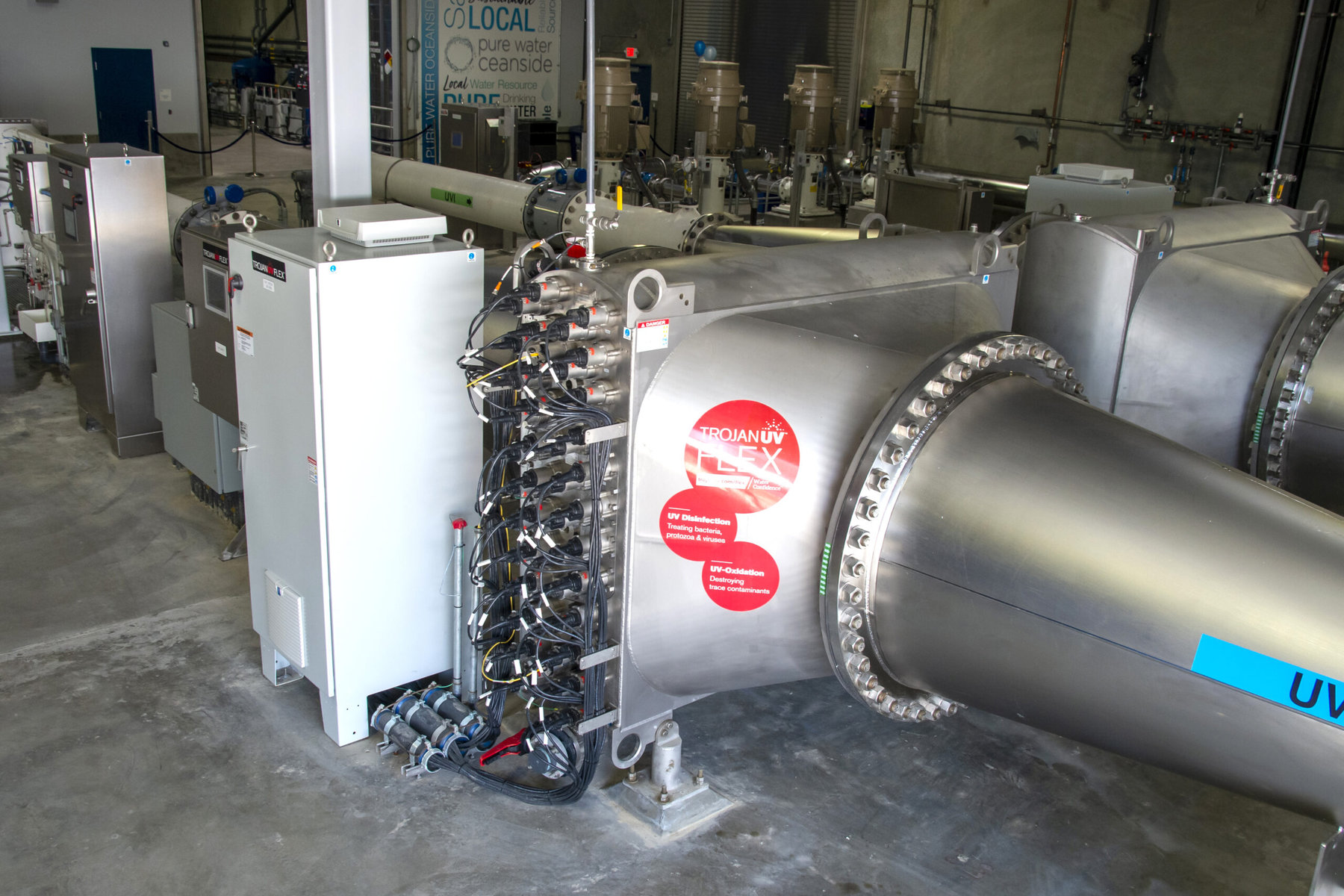
Have any residents complained that they are now paying for purified wastewater? “What we hear from our residents is, ‘It’s about time,’” Leahy reports. “Otherwise we would have wasted a precious resource and simply let it drain into the ocean.”
Still, at the moment Leahy has to call the purified water “indirect potable water,” because all facilities in the state are waiting for the final version of the new water regulations that will govern which certifications and standards purified water must meet in order to flow directly out of residents’ taps. The water from her facility is injected through three wells into the local aquifer, which feeds the city’s drinking water. “The aquifer acts as an additional natural purificator,” Leahy explains. A separate system purifies water to the standards required for irrigation, for instance, of public parks.
The technology has advanced to a stage where even homeowners can consider installing simplified versions of gray water recycling in their homes.
The Canadian company Greyter and the Dutch company Hydraloop are two companies offering solutions for smaller buildings and homes. “In the average American household, 25 percent of potable water is used for toilet flushing,” says Melissa Lubitz, Hydraloop’s North America representative. “This is an insane amount of water.”
The Hydraloop installation is about the size of a refrigerator. It filters the gray water from showers, dishwashers and washing machines through a three-step process, including UV disinfection, so it can be reused for irrigation or flushing toilets. So far, fewer than 100 households in the U.S. have installed the technology. “People want to see first that it really works, that it doesn’t smell and that they don’t have to get their hands dirty,” Lubitz says. She believes that residential water recycling will follow the boom of solar panels and eventually be the norm in every newly built house. “We want to see it mandated,” she says, pointing out that Arizona recently had to shut down developments near Phoenix that rely on groundwater because of water shortages. “One shower a day creates 30 gallons of water,” Lubitz calculates. “If you have a housing development with 100 houses, you’ll save 10 million gallons of water per year.” What’s crucial is education, says Lubitz, “and convincing the public not only that this technology is needed but that it works.”
Back at Pure Water Oceanside, Lindsay Leahy’s biggest argument for the plant is the faucet next to the UV lamps. Inviting the reporter to test for herself, she pours us both a cup from the tap. It tastes clean, crisp and fresh. Cheers!








